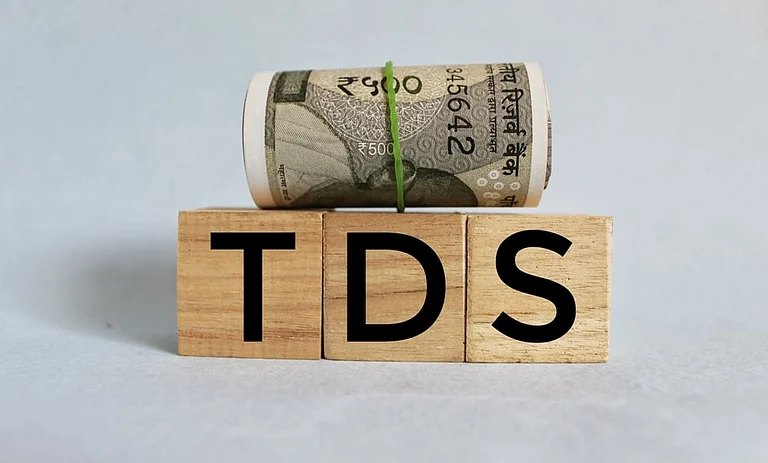For every new joiner, the looming question could be what is best Tax Deducted at Source (TDS) or Provident Fund (PF) deduction. In India, most organisations offer a salary structure which makes PF deduction mandatory.
TDS Vs PF Deduction: What Is The Best Salary Structure For Which Bracket, Experts Opine
While, TDS may be beneficial for lower income brackets, opening the scope for other investments, PF deductions are most suited for people falling in the higher income bracket, allowing them to save more on taxes
However, an individual may be offered the option to choose between TDS deductions and PF deductions. What if one day an employee finds themselves in such a position, which structure should they go for? Outlook India spoke with experts to understand which structure suits which salary bracket the most.
Before choosing a specific structure it is crucial that one understands their tax implications.
What is TDS?
TDS amount is a tax deduction made from the salary. It is a form of pre-paid tax where the deducted amount is adjusted against the total tax liability when filing tax returns. It is a method to collect tax at the source of income. If excess TDS has been deducted, the taxpayer can claim a refund.
What is PF?
Meanwhile, PF is a form of retirement savings scheme where both the employer and employee contribute a certain percentage of the employee’s salary towards a retirement fund. It provides the employee with a secure retirement savings plan. Tax benefits may be claimed on PF contributions Under Section 80C of the Income Tax Act (up to a limit of Rs 1.5 lakh). Interest earned on PF is tax-free if the funds are kept for 5 years or more.
“TDS is mandatory for various payments, including salaries, when they exceed specific thresholds. Higher earners, falling in higher tax slabs (e.g., 30 per cent) will have a higher TDS percentage deducted, whereas lower earners will have a lower or no TDS rate. TDS is beneficial for individuals having mid to high tax liability,” Akshay Soni, Managing Partner, Shakya Legal, a law firm explained.
However, “contributions to the PF are beneficial for those who fall within lower to mid-income tax brackets, as it allows them to save and earn interest in a tax-free manner (if maintained for 5 years or more). However, PF also offers a tax advantage across all brackets because of deductions under Section 80C,” Soni further added.
“Income brackets where annual EPF contributions remain within Rs 2.5 lakh (private employees) or Rs 5 lakh (government employees) are the most beneficial. Contributions exceeding these limits result in taxable interest, reducing savings,” said, CA Niresh Maheshwari, Director of Wealth Wisdom India Pvt. Ltd. (WWIPL), a platform specializing in private equity investment opportunities.
Speaking on the drawbacks of TDS deductions, Maheshwari explained, “Relying heavily on TDS deductions can ensure compliance but may overlook long-term financial goals. While TDS ensures timely tax payments, it doesn’t help optimize retirement savings or investment growth.”
“To maximize financial growth, it's crucial to supplement TDS with strategic tax-saving investments like EPF, PPF, and NPS. These investments offer tax benefits and build wealth over time,” he further added.
“Additionally, focusing solely on TDS may lead to missed tax exemptions or underutilized deductions, which could otherwise improve your overall financial strategy. However, there are risks. Over-relying on TDS can affect cash flow if too much tax is deducted upfront, leading to delays in refunds,” as per Maheshwari.
Explaining the benefit of TDS deduction in terms of tax compliance, Maheshwari explained, “Inaccurate or delayed submission by your employer can cause compliance issues. To ensure financial stability, it's essential to integrate TDS with broader financial planning—ensuring timely deductions, optimizing tax-saving investments, and managing cash flow effectively.”
Other Salary Components
Basic Pay
Around 40 to 50 per cent of your cost to the company (CTC) makes up for your basic pay. Hence, your basic pay is taxable, making it a deciding factor when calculating tax implications.
Allowances
These are benefits offered to employees over and above their basic pay to cover their miscellaneous expenses. The most common components of this structure include house rent allowance (HRA) and leave travel allowance (LTA).

